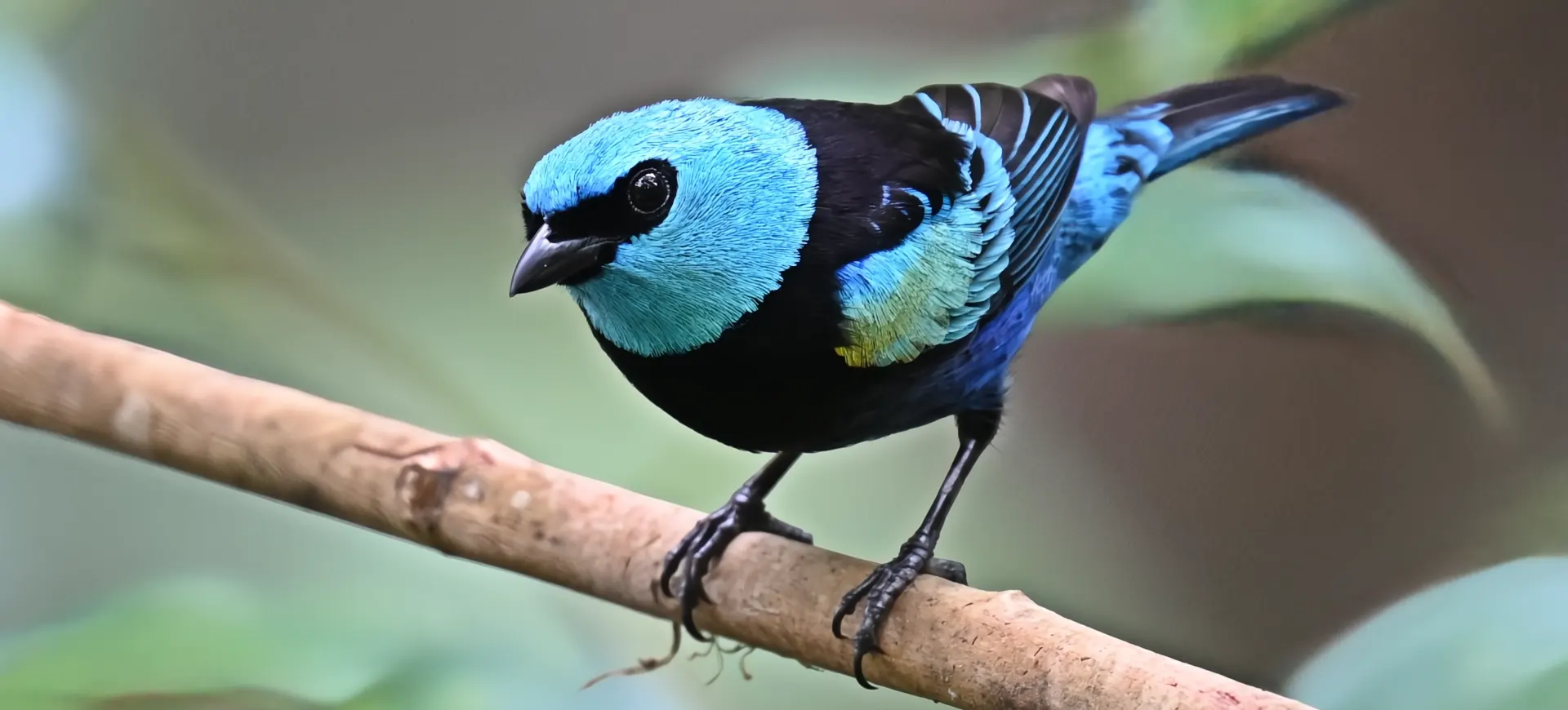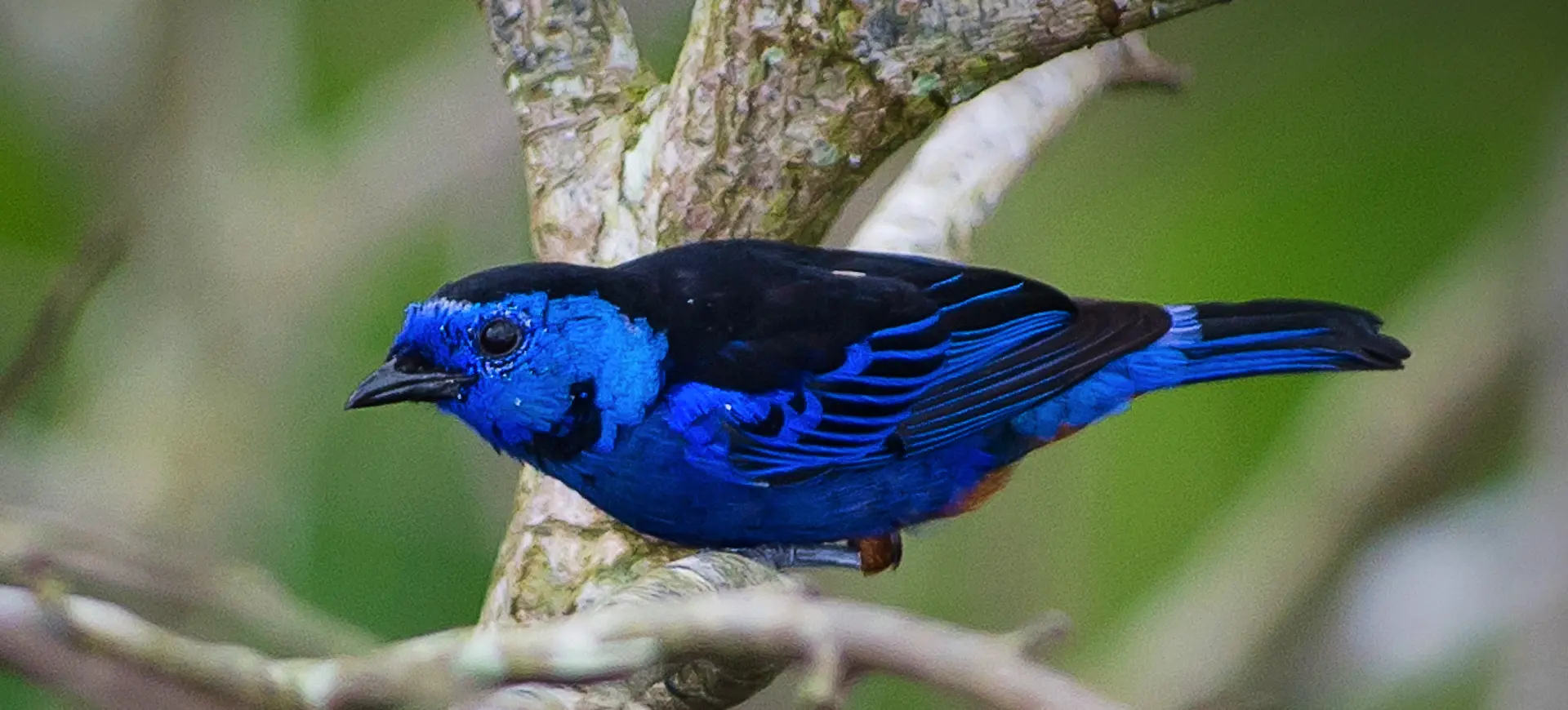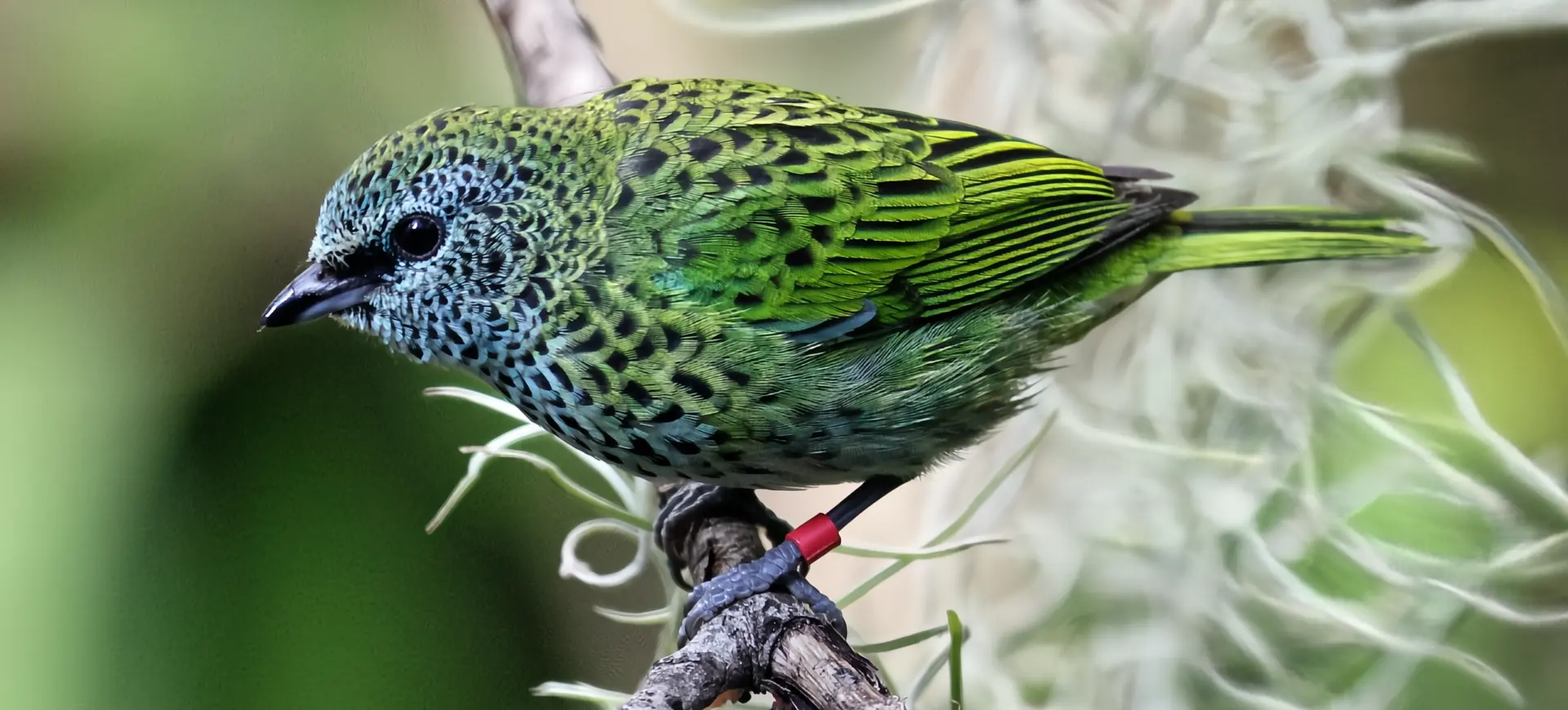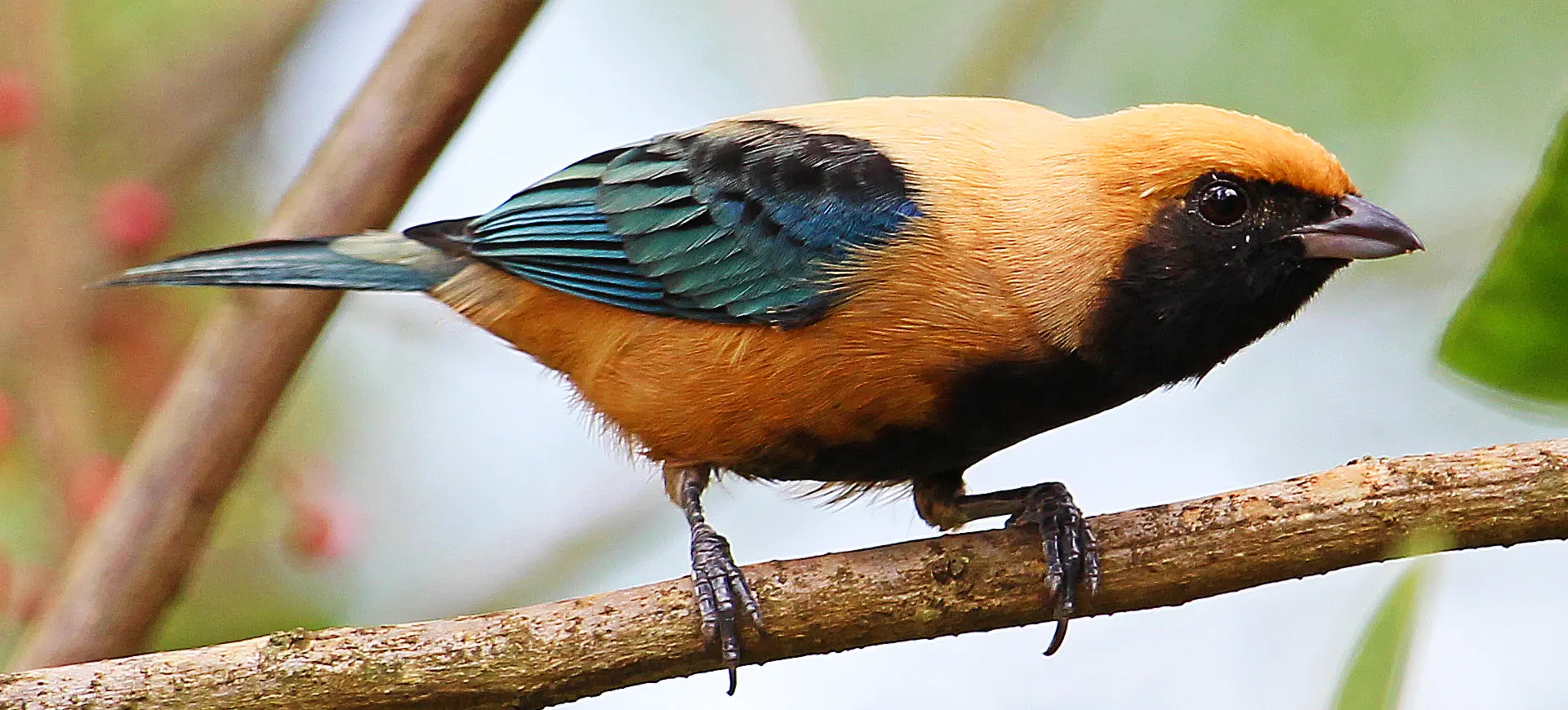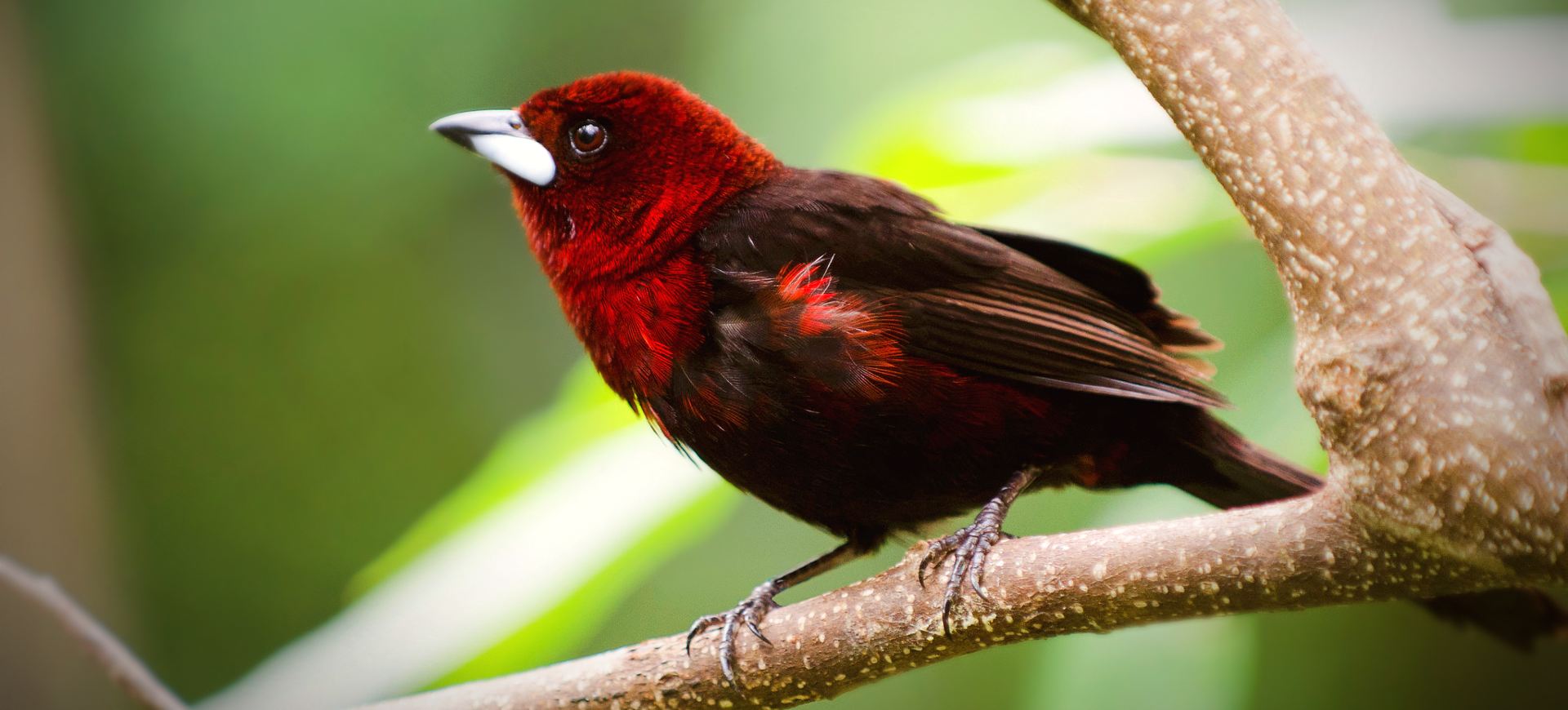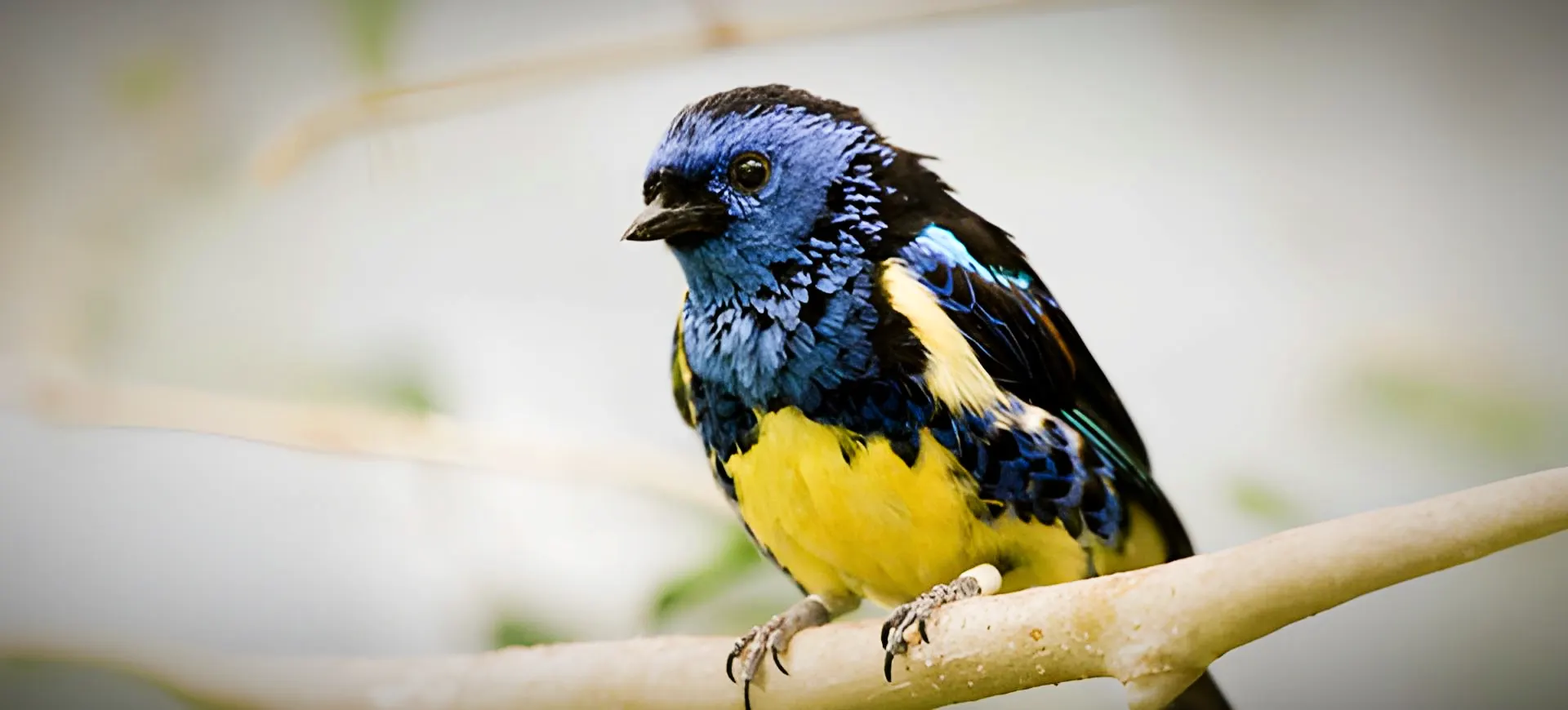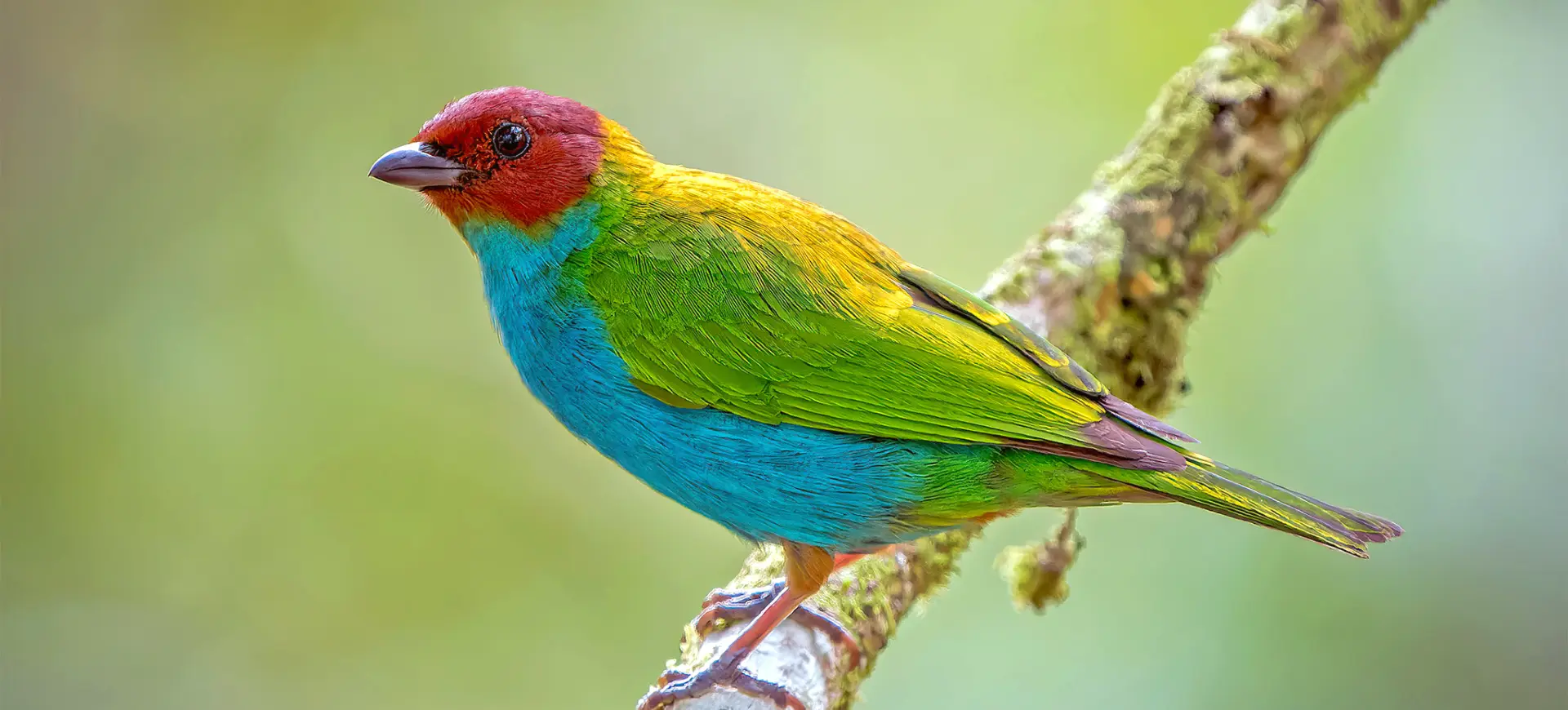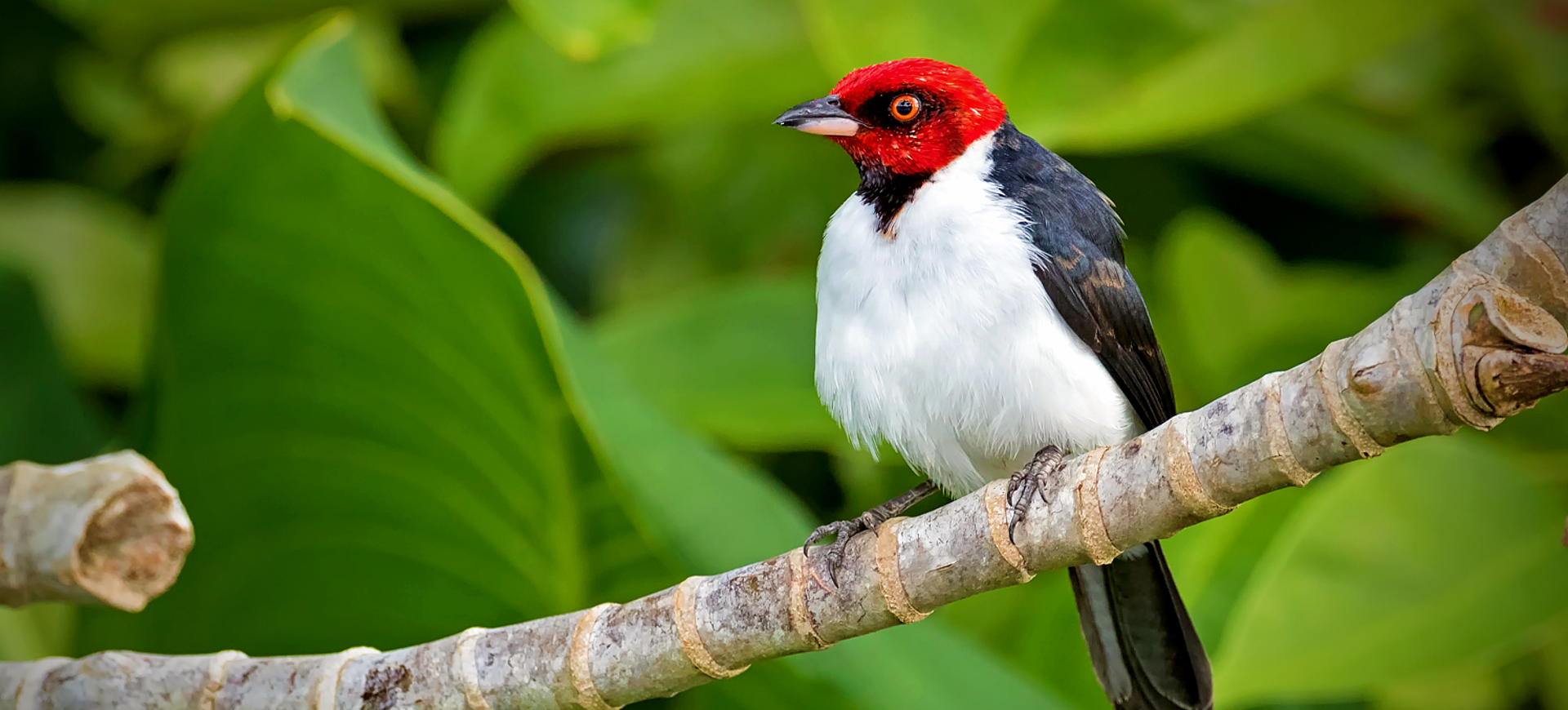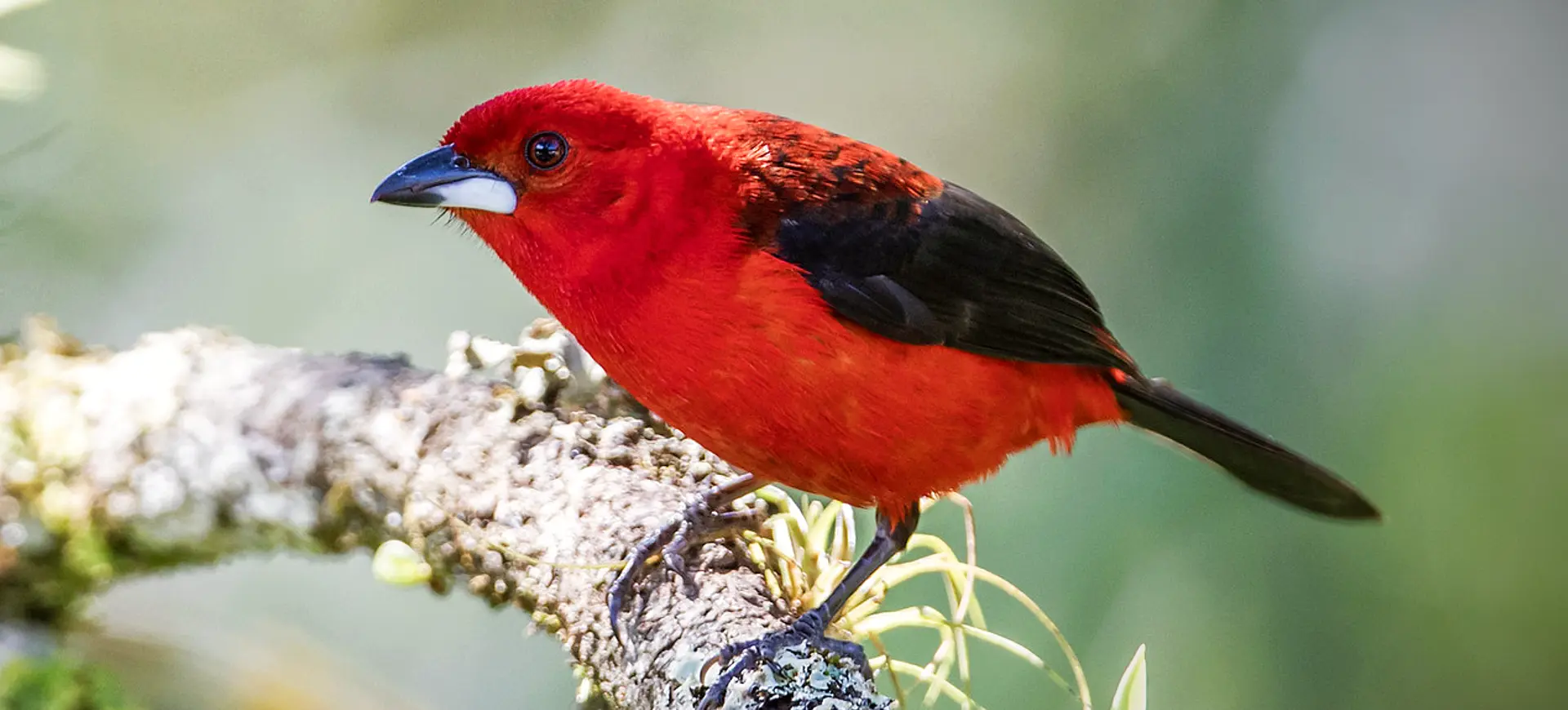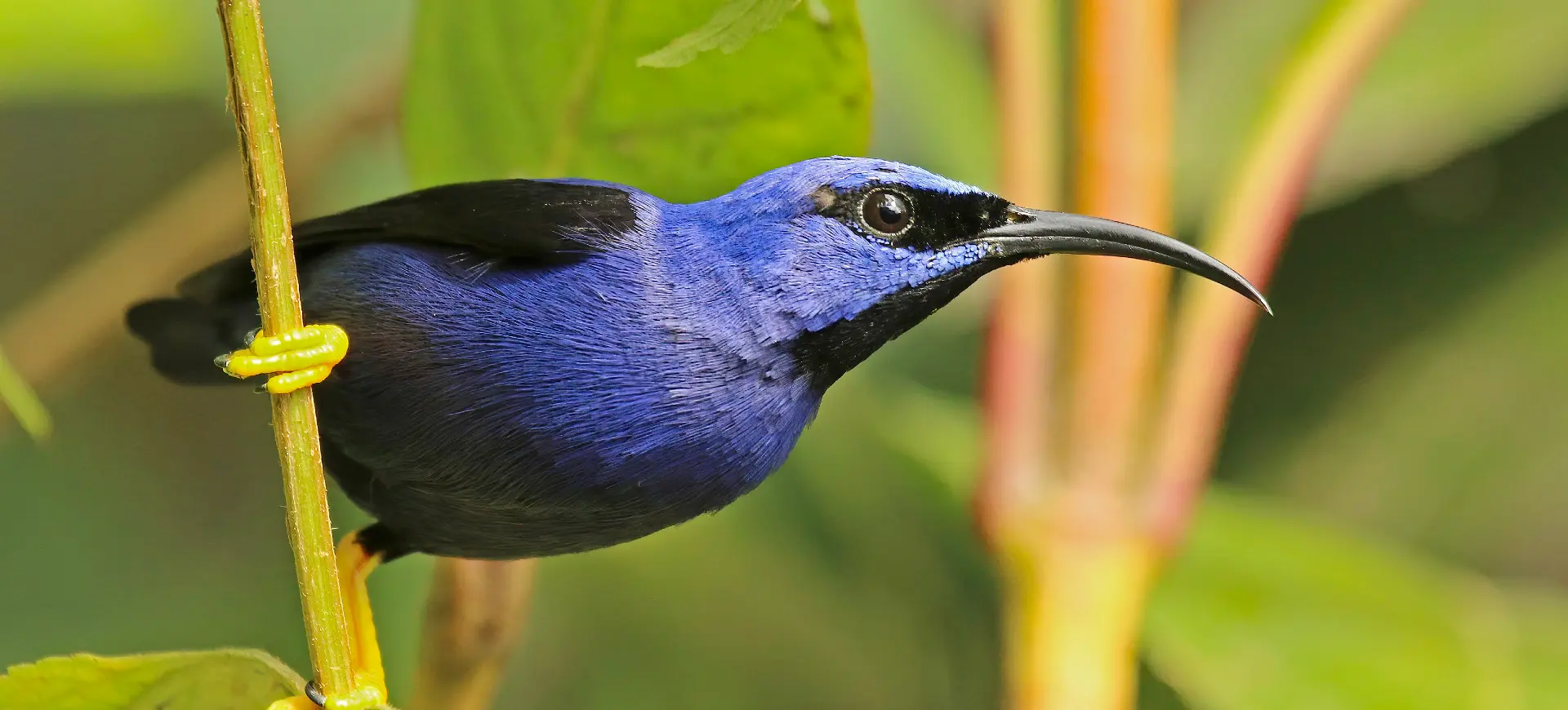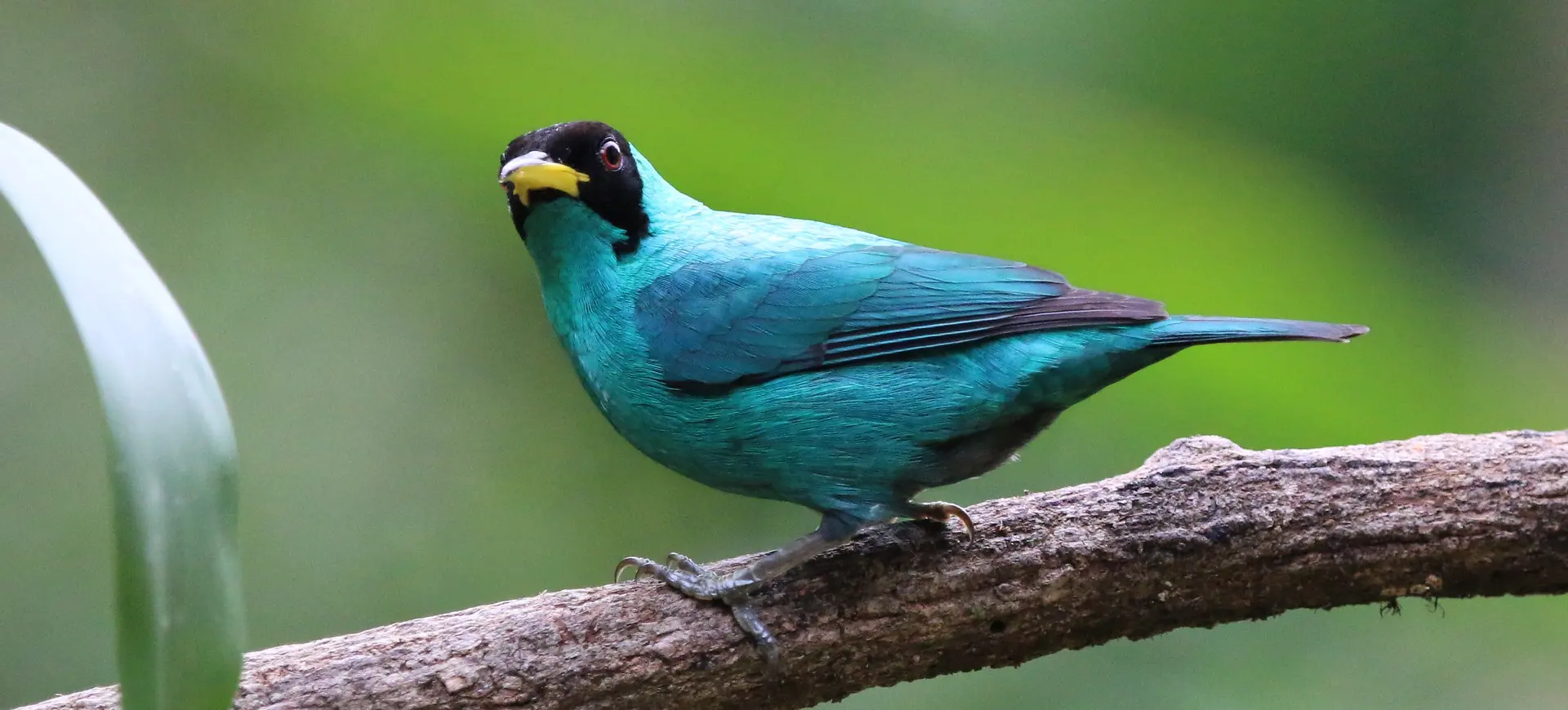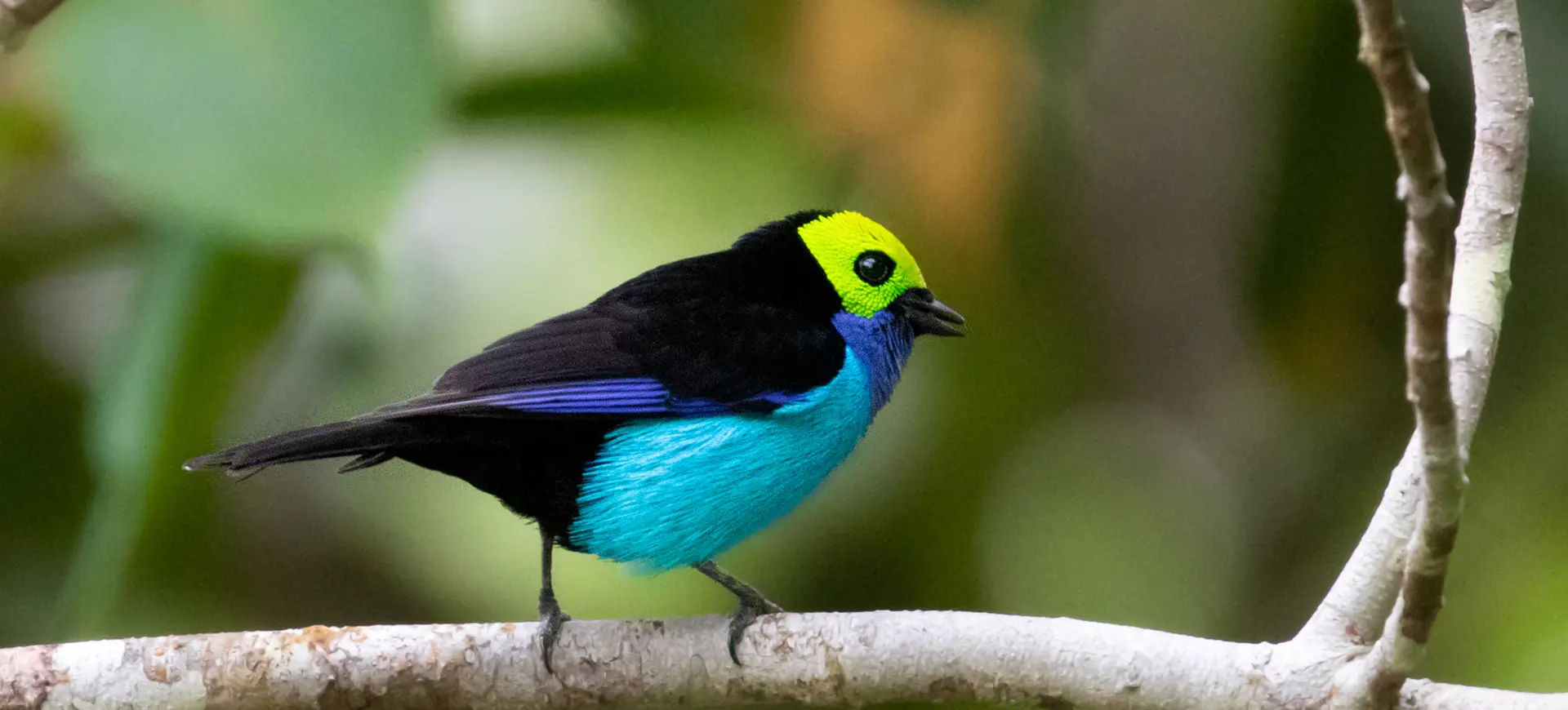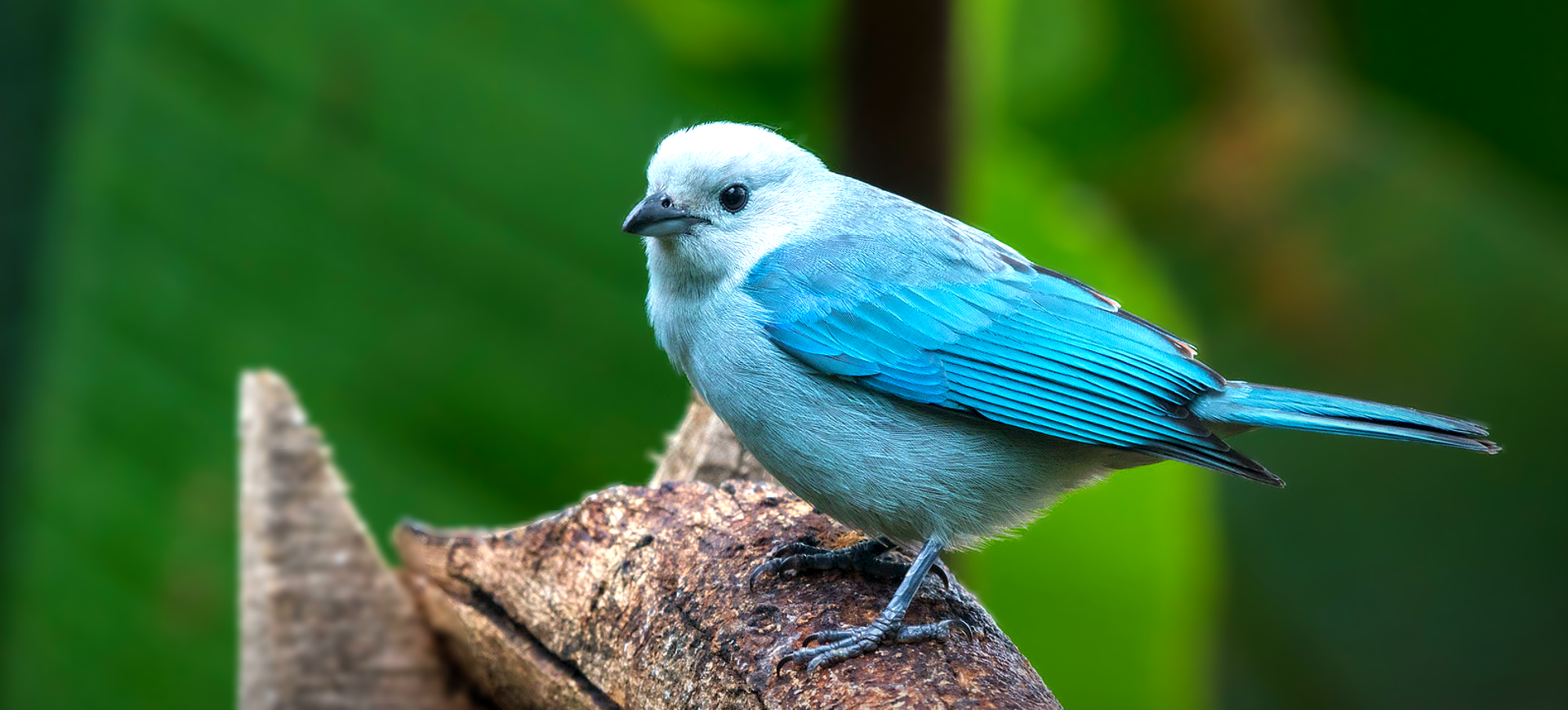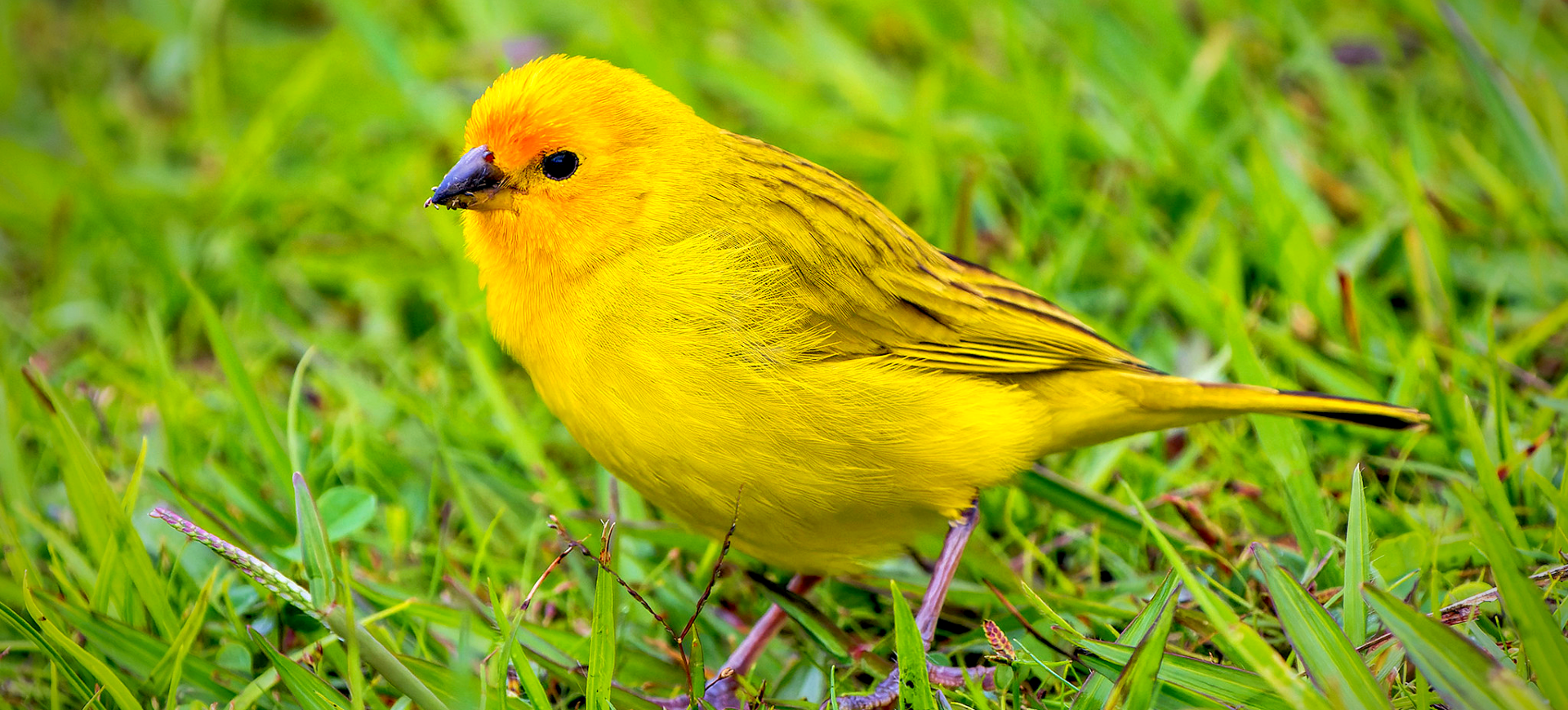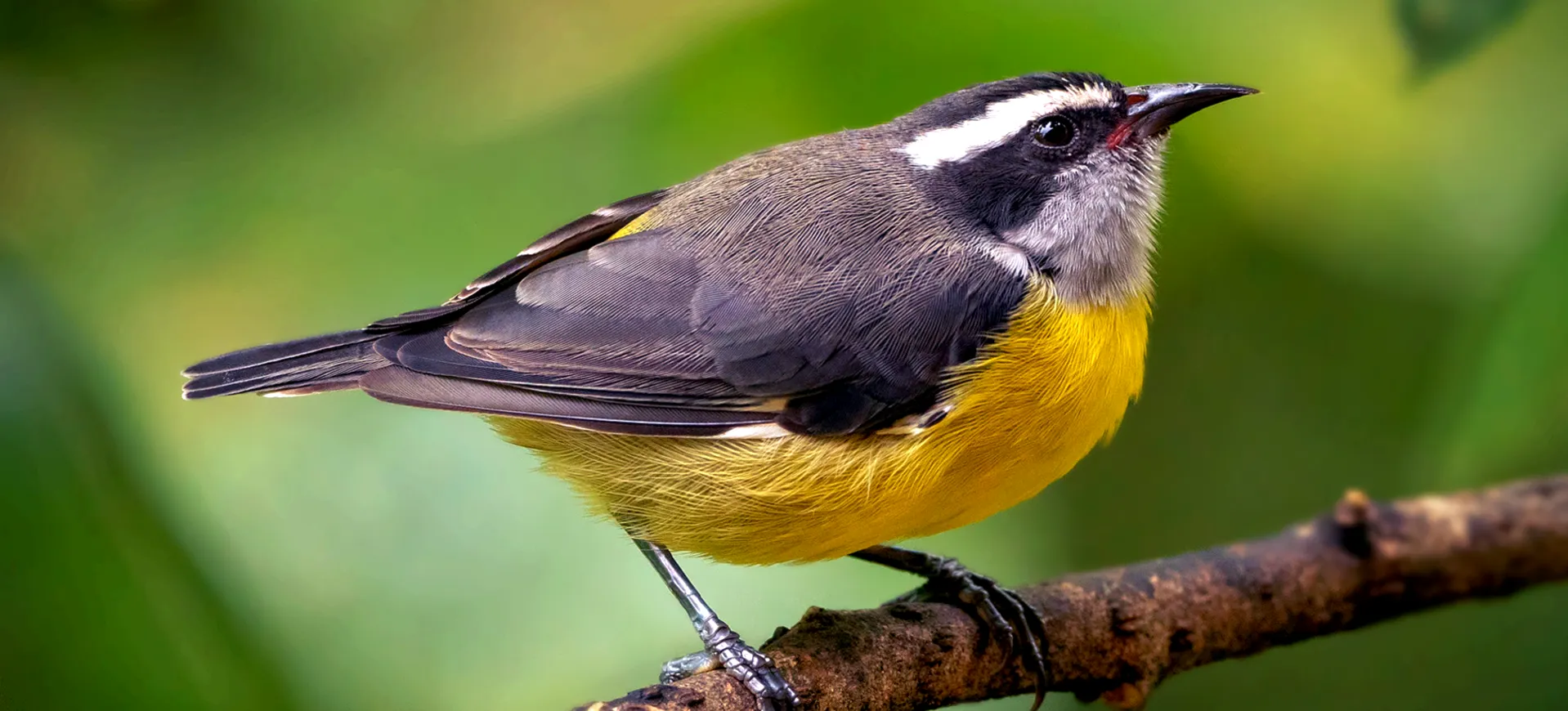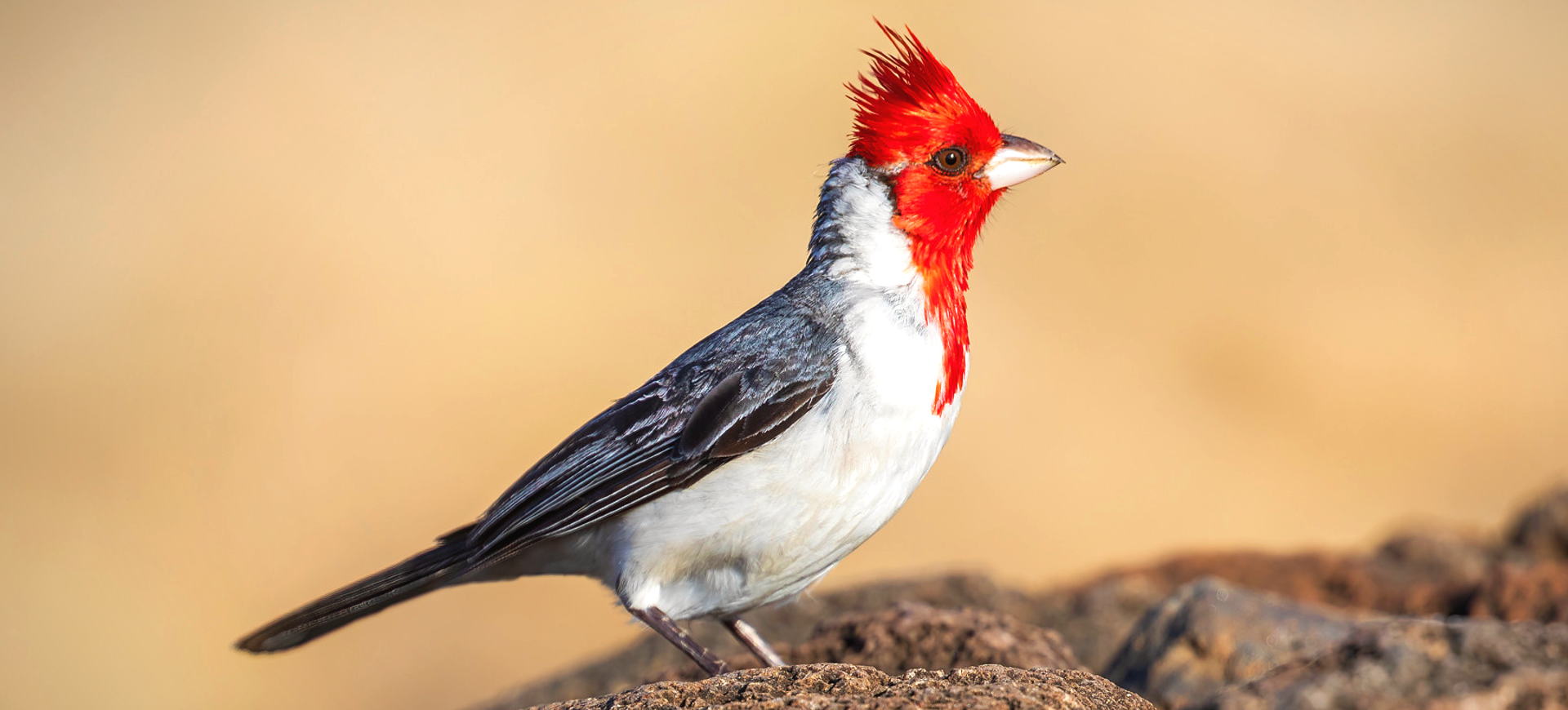Overview
The Swallow Tanager is a strikingly beautiful bird across South America, easily recognized by its vibrant blue plumage in males and its greenish color in females. This species belongs to the family Thraupidae and is the sole member of the genus Tersina. It inhabits various forested environments, from tropical rainforests to open woodlands, showcasing a remarkable adaptability to different habitats. The bird is named for its swallow-like flight pattern, characterized by swift, gliding movements that make it a graceful presence in the skies above its forest home.
Males are particularly notable for their bright turquoise-blue body, which contrasts sharply with their black wings and tail. At the same time, females and juveniles display a more subdued greenish plumage, blending seamlessly into the leafy environments they inhabit. The Swallow Tanager feeds primarily on fruits but will also consume insects, making it an omnivore. Its feeding behavior is a spectacle, as the bird skillfully catches insects mid-air or plucks fruits while barely stopping in flight, utilizing both the forest canopy and open spaces foraging.
The breeding season brings out the best of the Swallow Tanager’s social behaviors, with males performing elaborate aerial displays to attract females. Nesting typically occurs in tree cavities or abandoned woodpecker holes, where females lay two to three eggs. Both parents share in the care of the young, highlighting a cooperative approach to raising their offspring. The Swallow Tanager plays a vital role in its ecosystem as a seed disperser, contributing to the regeneration and health of its forest habitat.
Taxonomy
Kingdom
Phylum
Class
Order
Family
Genus
Species
Type
Physical Description:
The Swallow Tanager is a medium-sized bird. Males showcase a brilliant turquoise-blue body and black wings and tail, a stark contrast that makes them easily distinguishable in their natural habitat. Females and juveniles, on the other hand, wear a more camouflaged greenish plumage, allowing them to blend into the foliage. This sexual dimorphism is typical of the species, with both sexes exhibiting a sleek, streamlined body that facilitates their agile flight.
The bird measures approximately 6 to 7 inches, and its weight range reflects its light, aerodynamic build. The Swallow Tanager’s beak is short and stout, suited for its omnivorous diet, enabling it to consume fruits and insects efficiently. Its wings are long and pointed, resembling those of swallows, contributing to its distinctive flying style, characterized by swift, gliding movements that allow it to navigate through its forested environment effortlessly.

Lifespan: Wild: unknown || Captivity: unknown

Weight: Male & Female: 0.8-1.1 oz (23-31 g)

Length: Male & Female: 6-7 inches (15-18 cm)

Wingspan: Male & Female: 7-8 inches (16-20 cm)

Top Speed: Unknown
Characteristic:
Native Habitat:
The Swallow Tanager inhabits a broad range of forested environments across South America, from the tropical rainforests of the Amazon basin to the open woodlands and forest edges. Its adaptability to varied habitats has enabled it to thrive in a wide geographical range, extending from northern South America to northern Argentina. The species prefers areas with abundant fruiting trees and shrubs, which provide the bulk of its diet.
The bird’s presence across diverse environmental gradients, from lowland moist forests to montane regions, highlights its ecological flexibility. Despite this adaptability, the Swallow Tanager relies on preserving these habitats to sustain its population. Conservation efforts aimed at protecting these ecosystems are crucial for the continued survival of the species and the biodiversity of the regions they inhabit.
Climate Zones:
Biomes:
WWF Biomes:
Biogeographical Realms:
Continents:
Diet:
Diet & Feeding Habits:
The Swallow Tanager is primarily frugivorous, favoring a diet of fruits it often gathers in flight, showcasing its remarkable agility and precision. This diet is supplemented by insects, which the bird captures mid-air, demonstrating its adaptability and skill as a hunter. The bird’s feeding habits play a crucial role in seed dispersal, contributing significantly to the health and regeneration of its forest habitat.
Feeding alone or in pairs, the Swallow Tanager occasionally joins mixed-species flocks to forage, especially during the non-breeding season. This behavior enhances feeding efficiency and reduces the risk of predation. The species’ ability to exploit various food sources, from dense forest canopies to open woodlands, underscores its adaptability and importance within its ecosystem.
Mating Behavior:
Mating Description:
The Swallow Tanager exhibits monogamous breeding behaviors, with pairs forming strong bonds during the breeding season. Males attract females through aerial displays and vocalizations, showcasing their agility and vibrant plumage. Nesting typically occurs in tree cavities or abandoned woodpecker holes, providing a safe and secure environment for laying eggs and rearing young.
Both parents care for the offspring, from incubation to feeding, demonstrating a high degree of parental investment. This cooperative approach ensures a higher survival rate for the chicks, emphasizing the importance of stable breeding territories and the availability of suitable nesting sites for the species’ reproductive success.
Reproduction Season:
Birth Type:
Pregnancy Duration:
Female Name:
Male Name:
Baby Name:
Social Structure Description:
The Swallow Tanager is a social species, often observed in pairs or small groups, especially during the non-breeding season. These groups may join larger mixed-species flocks to forage, benefiting from the increased vigilance against predators and enhanced foraging opportunities. Social interactions within these groups include vocal communications and cooperative behaviors, which are crucial in maintaining group cohesion and facilitating resource sharing.
During the breeding season, the social structure becomes more focused on the monogamous pair and their offspring, with both parents actively involved in nesting and chick-rearing activities. The species’ social dynamics, from pair bonding to group foraging, highlight the complexity of its interactions and the importance of social bonds for survival and reproductive success.
Groups:
Conservation Status:
Population Trend:
The IUCN classifies the Swallow Tanager as Least Concern, indicating a stable population across its extensive range. This status is supported by the species’ adaptability to various habitats and its ability to thrive in pristine and altered landscapes. However, ongoing habitat loss and fragmentation due to agricultural expansion and deforestation pose potential threats to local populations, underscoring the need for continued habitat protection and management.
The species benefits from establishing protected areas and conservation initiatives that preserve forest habitats. These measures are crucial for maintaining the ecological balance and ensuring the continued presence of the Swallow Tanager in South America’s diverse ecosystems. Conservation efforts that address the root causes of habitat loss and engage local communities in sustainable practices are essential for the species’ long-term survival.
Population Threats:
The primary threats to the Swallow Tanager include habitat destruction and fragmentation resulting from logging, agricultural expansion, and urban development. These activities reduce the availability of suitable habitats and food sources, potentially impacting the species’ ability to maintain stable populations. Climate change also poses a long-term threat, potentially affecting the bird’s habitat and food availability.
Conservation strategies that focus on habitat protection, sustainable land use, and the mitigation of climate change impacts are critical for addressing these threats. The involvement of local communities in conservation efforts and promoting policies that support habitat preservation are key to ensuring the Swallow Tanager’s future.
Conservation Efforts:
Conservation efforts for the Swallow Tanager include habitat preservation and restoration, focusing on maintaining and reconnecting forested areas across its range. The establishment of protected areas and the implementation of sustainable forestry practices contribute to the conservation of the species’ habitat. Environmental education programs and community-based conservation initiatives raise awareness of the importance of biodiversity and the need for habitat protection.
International collaboration and research are also important to conservation efforts, providing valuable insights into the species’ ecology and informing effective conservation strategies. Ongoing monitoring of Swallow Tanager populations and habitats helps assess the effectiveness of conservation measures and identify areas where additional efforts are needed. The collective action of governments, conservation organizations, and local communities is essential for ensuring the Swallow Tanager’s continued survival in the wild.
Additional Resources:
Fun Facts
- The Swallow Tanager is the only member of the genus Tersina, making it unique among tanagers.
- Males undergo a dramatic molt, losing their bright blue plumage and temporarily resembling females before regaining their colors.
- They can catch insects on the wing, displaying remarkable agility and precision in flight.
- The species plays a vital role in seed dispersal, contributing to the health of their forest habitats.
- Swallow Tanagers have a wide vocal range, including melodious calls and songs for communication and mating.
- They are often seen dipping and soaring in the air, resembling swallows, which is how they got their name.
- The bird’s adaptability to different habitats has enabled it to thrive across a broad geographical range.
- Conservation areas and national parks protect the Swallow Tanager’s habitats.
- The species’ social behavior, including forming mixed-species flocks, enhances its survival in the wild.
- Despite their Least Concern status, ongoing conservation efforts are essential to mitigate threats and ensure the Swallow Tanager’s future.





